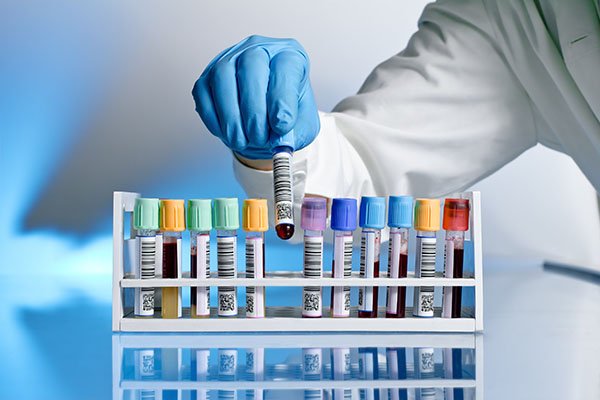Advancements in Technology and Data Analytics in Hospital Supply and Equipment Management
Summary
- Advancements in technology and data analytics are key topics at global nursing summits.
- The importance of sustainability and reducing waste in hospital supply and equipment management is being emphasized.
- Collaboration between healthcare professionals and suppliers is crucial for improving efficiency and patient care.
Advancements in Technology and Data Analytics
One of the key topics discussed at global nursing summits is the role of technology and data analytics in hospital supply and equipment management. With the rise of digital health solutions, nurses and other healthcare professionals are increasingly relying on innovative tools to streamline processes and improve patient outcomes.
Implementation of Electronic Health Records
Electronic Health Records (EHRs) have revolutionized the way Healthcare Providers manage patient information. At nursing summits, professionals discuss the benefits of EHRs in tracking and monitoring inventory, as well as analyzing usage patterns to optimize Supply Chain management.
Integration of RFID Technology
Radio-frequency identification (RFID) technology is another area of focus at global nursing summits. By tagging equipment and supplies with RFID chips, hospitals can improve inventory accuracy, reduce loss and theft, and enhance overall efficiency in procurement and distribution.
Data Analytics for Predictive Insights
Data analytics tools are instrumental in providing nurses with predictive insights that can inform decision-making in supply and equipment management. By analyzing trends and patterns, healthcare professionals can anticipate demand, prevent shortages, and optimize resource allocation.
Sustainability and Waste Reduction
Another prominent theme at global nursing summits is the importance of sustainability and waste reduction in hospital supply and equipment management. As healthcare institutions strive to minimize their environmental footprint and reduce costs, discussions on sustainable practices and innovative solutions take center stage.
Single-Use vs. Reusable Supplies
Nurses and Supply Chain managers deliberating on the pros and cons of single-use versus reusable supplies. While single-use items offer convenience and sterility, they contribute significantly to waste generation. Conversely, reusable options can reduce environmental impact and cut down on expenses in the long run.
Implementing Green Initiatives
Hospitals are increasingly adopting green initiatives to promote sustainability in their Supply Chain operations. This includes sourcing eco-friendly products, implementing recycling programs, and exploring alternative packaging solutions to minimize waste and promote a healthier environment.
Educating Staff on Sustainable Practices
Global nursing summits emphasize the need for educating healthcare staff on sustainable practices and waste reduction strategies. By raising awareness and providing Training Opportunities, hospitals can empower their employees to make environmentally conscious decisions in supply and equipment management.
Collaboration Between Healthcare Professionals and Suppliers
Collaboration between healthcare professionals and suppliers is a critical aspect of hospital supply and equipment management. By fostering strong partnerships and engaging in effective communication, hospitals can enhance efficiency, promote innovation, and ultimately improve patient care outcomes.
Strategic Vendor Relationships
Nursing summits highlight the value of establishing strategic relationships with suppliers to ensure the timely delivery of quality products and services. By working closely with vendors, hospitals can negotiate better terms, address issues promptly, and maintain a reliable Supply Chain.
Engaging in Product Feedback Loops
Healthcare professionals are encouraged to provide feedback to suppliers on the performance of equipment and supplies. By engaging in continuous improvement processes, hospitals can drive innovation, address quality concerns, and collaborate on developing tailored solutions that meet specific clinical needs.
Utilizing Performance Metrics for Evaluation
Global nursing summits stress the importance of utilizing performance metrics to evaluate supplier performance and assess the overall effectiveness of Supply Chain management practices. By leveraging data-driven insights, hospitals can identify areas for improvement, optimize resource utilization, and drive operational excellence.

Disclaimer: The content provided on this blog is for informational purposes only, reflecting the personal opinions and insights of the author(s) on the topics. The information provided should not be used for diagnosing or treating a health problem or disease, and those seeking personal medical advice should consult with a licensed physician. Always seek the advice of your doctor or other qualified health provider regarding a medical condition. Never disregard professional medical advice or delay in seeking it because of something you have read on this website. If you think you may have a medical emergency, call 911 or go to the nearest emergency room immediately. No physician-patient relationship is created by this web site or its use. No contributors to this web site make any representations, express or implied, with respect to the information provided herein or to its use. While we strive to share accurate and up-to-date information, we cannot guarantee the completeness, reliability, or accuracy of the content. The blog may also include links to external websites and resources for the convenience of our readers. Please note that linking to other sites does not imply endorsement of their content, practices, or services by us. Readers should use their discretion and judgment while exploring any external links and resources mentioned on this blog.
